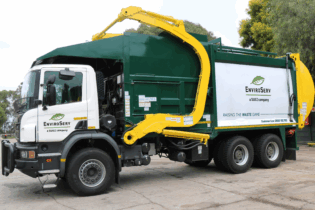Part of defensive driving is not only being cautious of the actions of others but adjusting your driving according to visibility conditions. A drivers’ vision is most affected at dawn, dusk and night. Ideally, one should avoid driving during these times as much as possible. Realistically, this is not always possible but you can equip yourself to drive confidently during these low-visibility times.
Night drivingMany drivers may struggle to see at night when oncoming lights reflect into their eyes or because they have night myopia and struggle to focus at night. As eyes continually adjust to passing headlights it creates a slow motion strobe light effect on your vision. International statistics estimate accident fatalities are three times greater at night. MD of MasterDrive, Eugene Herbert, suggests the following: • If your night vision is bad, do your best to avoid driving at night.
• Wearing polarised glasses during the day reduces the difficulty your eyes have adapting at night.
• Do not wear polarised sunglasses at night to reduce glare as they only reduce glares caused by UV light.
• The Sunglass Association of America says amber coloured night driving glasses do not reduce glare and can even make it more difficult for your eyes to compensate for glare.
• Make sure your windscreen is clean inside and out as dirt causes light to create a halo effect.
• Make sure your headlights are clean.
• Avoid smoking and driving at night as nicotine and carbon monoxide hamper night vision.
• Use the night setting on your review mirror.
• If you have an economy car, tilt your exterior mirrors slightly downward so your head is not in line with the lights reflected in them.
• If an oncoming vehicle has bright lights on, do not put yours on as well. Two blinded oncoming vehicles is extremely dangerous.
• If someone fails to switch off their brights, use the left side of the road for guidance.
• Brights in fog decrease visibility even more.
• Your headlights should give you approximately four seconds illumination ahead. If they do not, you are driving too fast for conditions.
Sun glare
Another dangerous and common visibility problem is driving with a glare reflected from the road surface and the car’s bonnet and windscreen. International estimates say sun glare is responsible for up to 3 000 accidents per year.
• Drive with headlights on so your visibility to other drivers is increased.
• Ensure you have an adequate following distance to stop suddenly.
• Do not use vinyl-based cleaners on your dashboard as it increases reflection.
• Avoid cars with light-coloured dashboards.
• Immediately slow down if you are suddenly blinded by glare.
• Never overtake during low sunlight.








